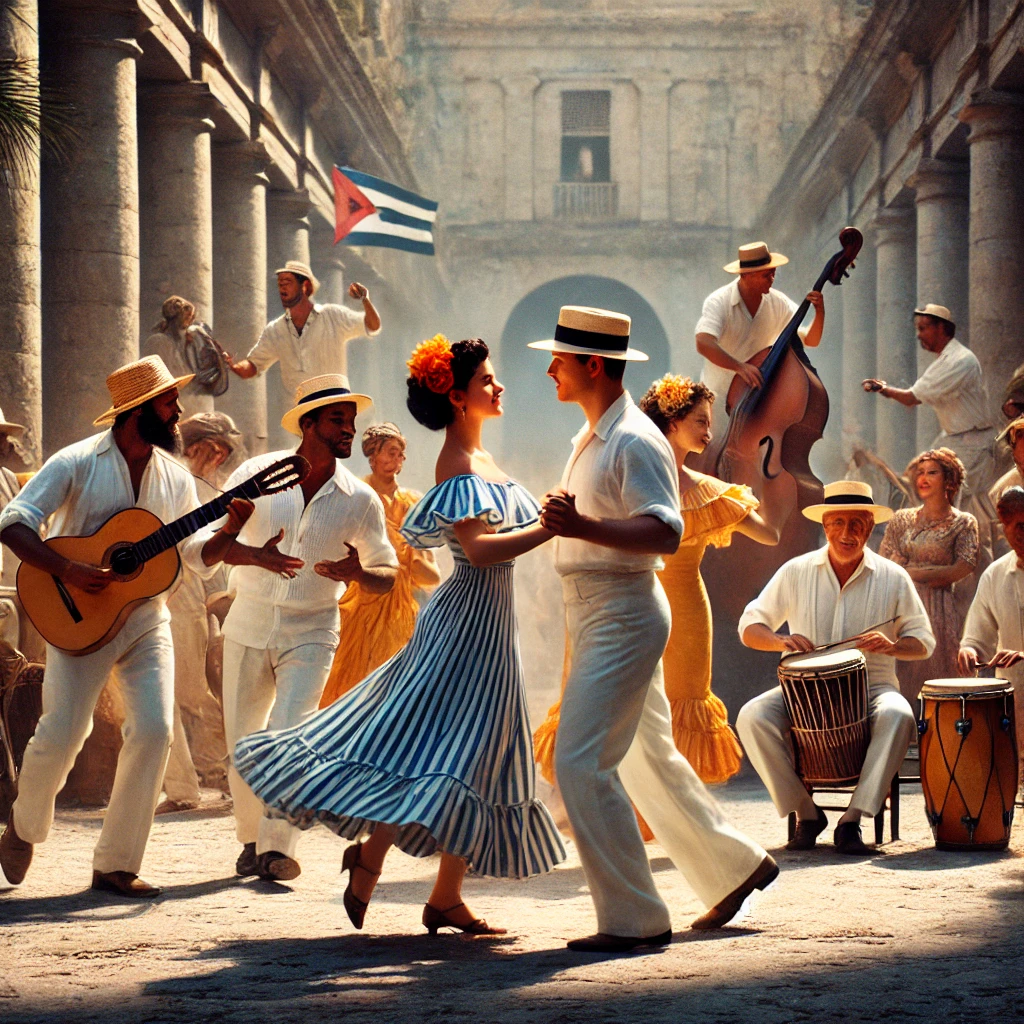Son
Cuban Son
Cuban Son is one of the most important and influential musical styles to emerge from Cuba, forming the foundation for many popular Afro-Cuban and Latin genres, including Salsa. It originated in the late 19th century in the rural eastern part of Cuba, particularly in the region of Santiago de Cuba, and gained widespread popularity in the early 20th century.

Key Features of Cuban Son:
-
Fusion of Cultures: Cuban Son is a blend of Spanish and African musical traditions. It combines Spanish guitar-based music with African rhythms and percussion, reflecting the diverse cultural influences of Cuba.
-
Instrumentation:
- Tres (a Cuban guitar-like instrument with three sets of double strings).
- Claves (wooden sticks used to create the clave rhythm, essential to Afro-Cuban music).
- Bongos (small drums played with fingers).
- Maracas and Guiro ( percussion instruments).
- Bass (or in earlier forms, the marímbula, a type of thumb piano).
- Trumpet (introduced later, giving the Son its signature brassy sound).
-
Clave Rhythm: The rhythmic backbone of Son is based on the clave, a syncopated rhythm that structures the entire song. The most common pattern is the 3-2 Son Clave, but the 2-3 pattern is also used.
-
Structure:
- Verso ( verse) section: The structured, song-like part with a repeating melody and lyrics.
- Montuno section: An open, improvisational section that features call-and-response vocals (between the lead singer and the chorus) and more rhythmic intensity.
-
Dance: The dance style associated with Son is marked by subtle, smooth movements, with couples dancing closely together. The footwork mirrors the rhythm of the music, and Son dancing laid the groundwork for Salsa dancing later on.
Evolution and Influence:
- Urbanization: Cuban Son spread from rural areas to Havana in the early 20th century, where it evolved with influences from other musical styles, like jazz.
- Tríos and Sextetos: Early Son groups (like Trío Matamoros or Sexteto Habanero) popularized the music in Cuba and internationally.
- Son and Salsa: In the 1940s and 1950s, Son evolved further, incorporating more horns and faster tempos, leading to the development of Salsa music in the 1960s and beyond.
Social and Cultural Impact:
Cuban Son played a crucial role in the formation of Cuban national identity. It reflected the cultural mixture of the island, bringing together the rural and urban populations, and bridging racial and class divides. Son became a symbol of Cuban popular music and was instrumental in the global spread of Afro-Cuban rhythms.
Artists like Arsenio Rodríguez, Ignacio Piñeiro, and Buena Vista Social Club were key figures in bringing Son music to international audiences. Today, it remains one of Cuba’s most cherished and influential musical legacies.

